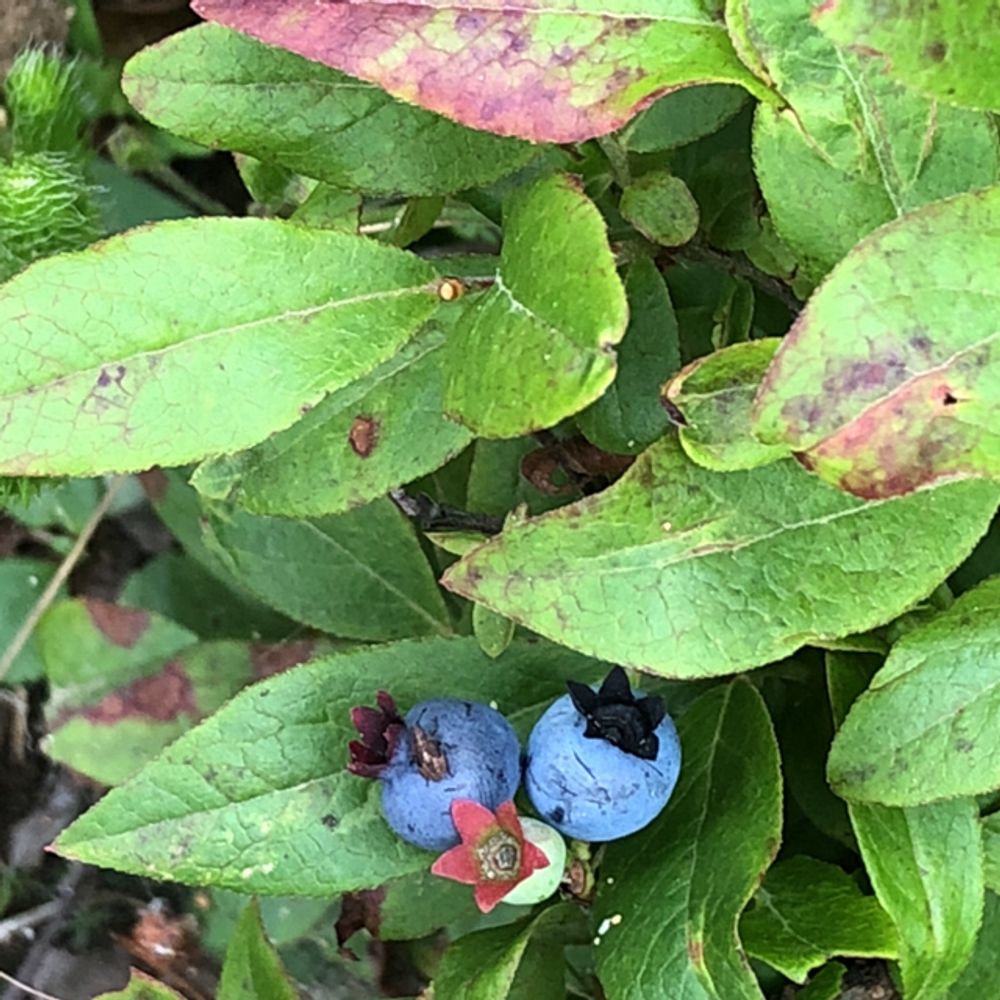Lowbush blueberry
(Vaccinium angustifolium)

Description
Vaccinium angustifolium, commonly known as the wild lowbush blueberry, is a species of blueberry native to eastern and central Canada (from Manitoba to Newfoundland) and the northeastern United States, growing as far south as the Great Smoky Mountains and west to the Great Lakes region. The species epithet angustifolium is a combination of the Latin words angustum meaning 'narrow', and folium meaning 'leaf'. It shares this epithet with other species of plants including Epilobium angustifolium. Vaccinium angustifolium is a low spreading deciduous shrub growing 5 to 60 cm (2 to 24 in) tall.[5] Its rhizomes can lay dormant up to 100 years and when given the adequate amount of sun light, soil moisture and oxygen content they will sprout. The leaves are glossy blue-green in summer, turning a variety of reds in the fall. The leaf shape is broad to elliptical. Buds are brownish red in stem axils. The flowers are white, bell-shaped, 4 to 6 mm (0.16 to 0.24 in) long. The fruit is a small sweet dark blue to black berry, full of antioxidants and flavonoids. This plant grows best in wooded areas, old abandoned farmyards or open areas with well-drained acidic soils. In some areas it produces natural blueberry barrens, where it is practically the only species covering large areas. There may be several buds on a healthy stem and each bud can open up and have several blossoms. A blueberry field that has full plant coverage can have as many as 150 million blossoms per acre. The Vaccinium angustifolium plant is fire-tolerant and its numbers often increase in an area following a forest fire. Traditionally, blueberry growers burn their fields every few years to get rid of shrubs and fertilize the soil. In Acadian French, a blueberry field is known as a brûlis (from brûlé 'burnt') because of that technique, which is still in use.
Taxonomic tree:







